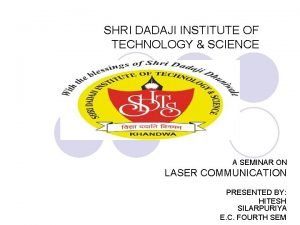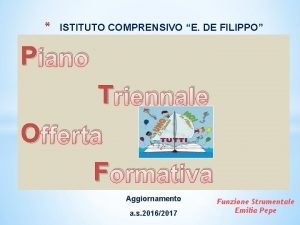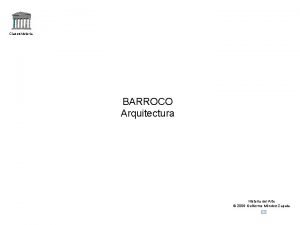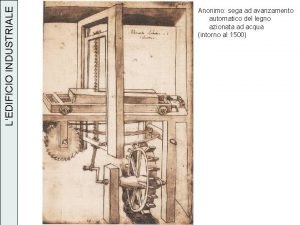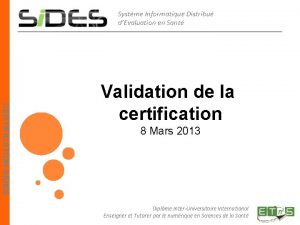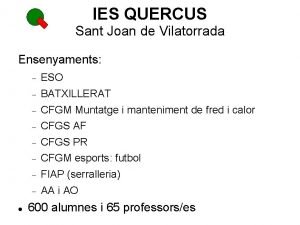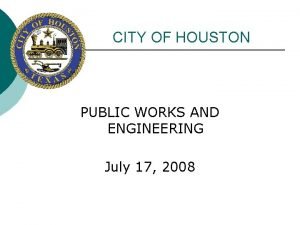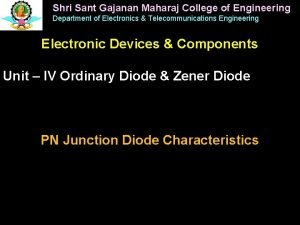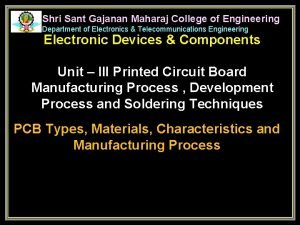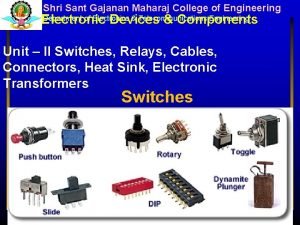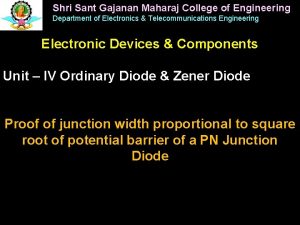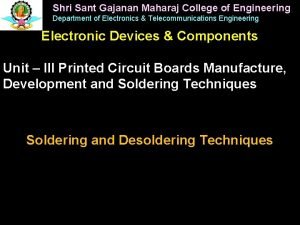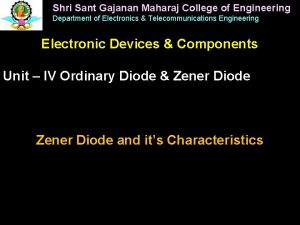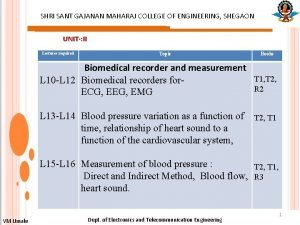Shri Sant Gajanan Maharaj College of Engineering Department































































- Slides: 63

Shri Sant Gajanan Maharaj College of Engineering Department of Electronics & Telecommunications Engineering Electronic Devices & Components Unit – II Switches, Relays, Cables, Connectors, Heat Sink, Choke, Electronic Transformers Heat Sink

Heat Sink

Heat Sink

Heat Sink

Heat Sink

Heat Sink

Heat Sink

Heat Sink

Heat Sink

Heat Sink

Heat Sink In electronic systems, a heat sink is a passive heat exchanger that cools a device by dissipating heat into the surrounding medium. In computers, heat sinks are used to cool CPUs or Graphic Cards. Heat sinks are used with high-power semiconductor devices such as power transistors and optoelectronics such as lasers and light emitting diodes (LEDs), where the heat dissipation ability of the basic device is insufficient to

Necessity of Using Heat Sink • Purpose of a heat sink is to conduct heat away from a device • Made of high thermal conductivity material (usually Al, Cu) • Increased surface area (fins etc) helps to remove heat to ambient • Interface between heat sink and device important for good thermal transfer

What is Heat Sink ? Ø Heat sinks are devices that enhance heat dissipation from a component to a cooler ambient – usually air, but sometimes to other fluids as well. Ø The primary purpose of a heatsink is to maintain the temperature of the device being cooled within acceptable limits as specified by the component manufacturer. Ø Keeping the component temperature under the specified limits ensures properation of the device, and improves reliability and life of component.

If heat sink is not used then? • Unequal power sharing in parallel or series semiconductor devices • Reduction in breakdown voltage in some semiconductor devices • Increase in leakage currents in semiconductor devices • Increase in switching times semiconductor devices

Heat Sink Materials and Finishes • Aluminum (6063 or 6061) is most common, followed by copper (which is 46 x more expensive, 3 x as heavy, by has 2 x the conductivity) • It is difficult to alter the surface of copper to improve radiation. • External finish of aluminum is usually anodize or chromate of various colors.

Heat Transfer • Heat transfer (or heat exchange) is the flow of thermal energy due to a temperature difference between two bodies • Heat transfers from a hot body to a cold one, a result of the second law of thermodynamics • Heat transfer is slowed when the difference in temperature between the two bodies reduces 16

Thermal Circuit Analogy • Use Ohm’s law analogy to model thermal circuits • Thermal resistance • k = thermal conductivity (W/(m. K))

Thermal Circuit Analogy • Heat transfer can be modeled by thermal circuits • Using Ohm’s law analogy: ELECTRICAL THERMAL Forcing variable Voltage (V) Temperature (K) Flow variable Current (A) Heat (W) Resistance (V/A) Thermal resistance (K/W) Capacitance (V/C) Thermal capacitance (J/K)

Thermal Circuit Analogy

Thermal Circuit Analogy • Elementary thermal network

Thermal Resistance • Thermal resistance quantifies the rate of heat transfer for a given temperature difference • k = thermal coefficient (W/(m. K)) • A = cross section (m 2) • l = length (m)

Thermal Resistance • Denoted by or θ • Unit is • Lesser θ better the heat conducting capacity of device

Thermal Conductivity of Selected Materials

Multiple Fin Heat Sink

Extruded Type Heat Sink

Extruded Type Heat Sink

Heat Sink Thermal Resistance Larger the area of Heat Sink lesser thermal resistance

Heat Sink Thermal Impedance • Interfaces – Sink to ambient – Case to Sink – Junction to Case

Heat Sink Thermal Impedance

Heat Sink Thermal Impedance

Heat Sink Thermal Impedance

Technical Terms ØP = Total power that is dissipated by the device (s) being cooled – (W) ØTj = Junction temperature of the device ØTc = Case temperature of the device ØTs = Heat sink temperature Maximum temperature of the heat sink at a location closest to the device ØTa = Ambient temperature

Technical Terms Θjc = junction thermal resistance, °C/W Θcs = insulator thermal resistance, °C/W Θsa = heat sink thermal resistance, °C/W Θja = junction to ambient, °C/W

The Basic Equation The governing equation which correlates the total power, temperature difference and thermal resistance can be expressed as The thermal resistance is analogous to the electrical resistance used in Ohm’s law.

= Thermal Resistance Rj-c is the Junction to case thermal resistance. Usually a parameter that is published by the component manufacturer Rc-s is thermal resistance across thermal interface material between the heatsink and the component. Rs-a is thermal resistance of the heatsink. Junction to Ambient is the sum of the resistances =

Heat Sink Selection Tj, Rjc and Q will be provided by the component manufacturer. Rcs – Thermal resistance of the interface material Ta – Ambient temperature Ta and Rcs are parameters that we can control to a certain extent Rsa is the number that will help us identify a heatsink that will meet our criteria.

Heat Sinks and Their Thermal Resistance

Semiconductors and Their Thermal Resistance

Transistor 2 N 3904 Static Thermal Model

Transistor 2 N 3904 Static Thermal Model

For efficient heat transfer, there should be Surface Roughness no gap between Device surface and Heat Sink Surface

Surface Roughness • Air gaps act as effective insulators • Need some interstitial filler • Many types available, including greases, elastomers, adhesive tapes • Seen by consumers e. g. in PC processor heatsink/fan kits

Conduction, Contact Surface Heat sink Actual contact area < 2% of apparent contact area Heat source Ø Perfect contact can never be ensured between the heatsink and the package. Ø This could lead to potential problems since trapped air acts as an insulator. Ø The performance of the heatsink can be much lower than estimated leading to high component temperatures. Ø To combat this problem, it is necessary to use a thermal interface material.

Interstitial Filler Materials

Thermal Grease

Thermal Compounds for Heat Sinks

The device should be Contact firmly attached to heat sink Effect Of Pressure with screw- nut. More the pressure, better heat transfer

Comparison Of Heat Sinks STAMPED EXTRUDED “CONVOLUTED” FAN

Heat Sinks for Air Cooling

Specification of Heat Sinks

Specification of Heat Sinks

Mounting Devices on Heat Sink

Mounting Stud Type Device on Heat Sink

Mounting Disk Type Device on Heat Sink

Mounting Flat Surface Type Device on Heat Sink

Mounting Flat Surface Type Device on Heat Sink

Heat Sink Design Parameters ØA heatsink can be optimised for performance by varying the different dimensions shown.

Fins α Conical fins seems have some advantages when only heat flow is considered Die casting always need a relief angle ! Heat source

Air Flow In A Conical Channel When both air flow and heat flow are considered, rectangular fins are better

Heat Sink Orientation Natural Convection gravity Ø The buoyancy effects of air Ø Ø forces hot air to move up and cold air to come down. Orient the heatsink keeping in mind the direction of gravity Fin thickness and fin pitch are important factors to consider while optimising the heatsink.

Heat Sink Orientation Natural Convection If fins are kept vertical, thermal resistance reduces which is an advantage

Heat Sink with Semiconductor Device • TO-92 (small transistor package)

Heat Sink with Semiconductor Device • TO-247
 Salisha maharaj
Salisha maharaj Shreesh maharaj
Shreesh maharaj Zeeta maharaj
Zeeta maharaj Ms maharaj
Ms maharaj Elogi maharaj
Elogi maharaj Shri narayan dharma paripalana yogam
Shri narayan dharma paripalana yogam Shri sad
Shri sad Shri dadaji institute of technology and science
Shri dadaji institute of technology and science Shri bhairavdev vidyalaya
Shri bhairavdev vidyalaya Shri ambika vidyalaya kedgaon
Shri ambika vidyalaya kedgaon Heddy shri ahimsa putra
Heddy shri ahimsa putra Information about varahamihira
Information about varahamihira Sustantivos compuestos ejemplos
Sustantivos compuestos ejemplos Sant'agostino prove dell'esistenza di dio
Sant'agostino prove dell'esistenza di dio Ic losapio san filippo neri
Ic losapio san filippo neri Donatello altar of sant'antonio, padua
Donatello altar of sant'antonio, padua Matanii costale la copii
Matanii costale la copii Sant'ivo compuesto
Sant'ivo compuesto Direttore dipartimento pediatria sant' orsola
Direttore dipartimento pediatria sant' orsola Escola antoni tapies sant boi
Escola antoni tapies sant boi Kava kaval anastomozlar
Kava kaval anastomozlar Peritoneovenöz şant
Peritoneovenöz şant Turbinenhalle behrens
Turbinenhalle behrens Club karate sant cugat
Club karate sant cugat Ic de filippo sant'egidio
Ic de filippo sant'egidio Escola la floresta
Escola la floresta Escola jaume balmes sant martí sarroca
Escola jaume balmes sant martí sarroca Sant pere del vatica
Sant pere del vatica Collegio sant antonio
Collegio sant antonio Pilar cruciforme romanico
Pilar cruciforme romanico Sant'agostino chi canta prega due volte
Sant'agostino chi canta prega due volte Lopco
Lopco Intranet sant andrea
Intranet sant andrea Tms carrefour puissance
Tms carrefour puissance Sidesante
Sidesante Escola les roquetes sant pere de ribes
Escola les roquetes sant pere de ribes Hsjd bronquiolitis
Hsjd bronquiolitis Sant tukaram vidyalaya dehu
Sant tukaram vidyalaya dehu Sant eller falskt om världen
Sant eller falskt om världen Ies quercus sant joan de vilatorrada
Ies quercus sant joan de vilatorrada Escola onze de setembre sant quirze
Escola onze de setembre sant quirze Escola sant jaume dels domenys
Escola sant jaume dels domenys Pasadena city college police department
Pasadena city college police department Electrical engineering department
Electrical engineering department Engineering department in a hotel
Engineering department in a hotel City of houston idm
City of houston idm Kpi for engineers
Kpi for engineers Department of information engineering university of padova
Department of information engineering university of padova Department of information engineering university of padova
Department of information engineering university of padova Tum
Tum Eacademics iitd ac in sportal login
Eacademics iitd ac in sportal login Bridgeport engineering department
Bridgeport engineering department University of bridgeport computer engineering
University of bridgeport computer engineering Computer engineering department
Computer engineering department Ucla electrical engineering
Ucla electrical engineering University of sargodha engineering department
University of sargodha engineering department Asd college college readiness program
Asd college college readiness program Early college high school at midland college
Early college high school at midland college Zeal dnyanganga college of engineering and research
Zeal dnyanganga college of engineering and research Thakur college of engineering and technology
Thakur college of engineering and technology Kate gleason college of engineering
Kate gleason college of engineering Ucf computer engineering
Ucf computer engineering Tagore engineering college rathinamangalam
Tagore engineering college rathinamangalam St ann's engineering college chirala faculty
St ann's engineering college chirala faculty







